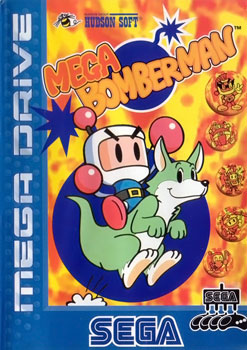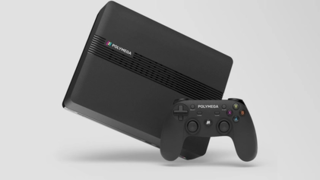
The Super Nintendo Entertainment System (SNES), commonly shortened to Super NES or Super Nintendo, is a 16-bit home video game console developed by Nintendo that was released in 1990 in Japan and South Korea, 1991 in North America, 1992 in Europe and Oceania, and 1993 in South America. In Japan, it is called the Super Famicom (SFC). In South Korea, it is called the Super Comboy and was distributed by Hyundai Electronics. The system was released in Brazil on August 30, 1993, by Playtronic. Although each version is essentially the same, several forms of regional lockout prevent cartridges for one version from being used in other versions.

The 32X is an add-on for the Sega Genesis video game console. Codenamed "Project Mars", it was designed to expand the power of the Genesis and serve as a transitional console into the 32-bit era until the release of the Sega Saturn. The 32X uses its own ROM cartridges and has its own library of games. It was distributed under the name Super 32X in Japan and South Korea, Genesis 32X in North America, Mega 32X in Brazil, and Mega Drive 32X in all other regions.

The TurboGrafx-16, known as the PC Engine outside North America, is a home video game console designed by Hudson Soft and sold by NEC Home Electronics. It was the first console marketed in the fourth generation, commonly known as the 16-bit era, though the console has an 8-bit central processing unit (CPU) coupled with a 16-bit graphics processor. It was released in Japan in 1987 and in North America in 1989. In Europe, the console is known as the PC Engine, after the Japanese model was imported and distributed in the United Kingdom and France from 1988. In Japan, the system was launched as a competitor to the Famicom, but the delayed United States release meant that it ended up competing with the Sega Genesis and later the Super NES.

The Master System is an 8-bit third-generation home video game console manufactured and developed by Sega. It was originally a remodeled export version of the Sega Mark III, the third iteration of the SG-1000 series of consoles, which was released in Japan in 1985 and featured enhanced graphical capabilities over its predecessors. The Master System launched in North America in 1986, followed by Europe in 1987, and then in Brazil and Korea in 1989. A Japanese version of the Master System was also launched in 1987, which features a few enhancements over the export models : a built-in FM audio chip, a rapid-fire switch, and a dedicated port for the 3D glasses. The Master System II, a cheaper model, was released in 1990 in North America, Australasia and Europe.
The fifth generation era refers to computer and video games, video game consoles, and handheld gaming consoles dating from approximately February 20, 1993, to March 23, 2006. For home consoles, the best-selling console was the Sony PlayStation, followed by the Nintendo 64, and then the Sega Saturn. The PlayStation also had a redesigned version, the PSone, which was launched on July 7, 2000.

The Super FX is a coprocessor on the Graphics Support Unit (GSU) added to select Super Nintendo Entertainment System (SNES) video game cartridges, primarily to facilitate advanced 2D and 3D graphics. The Super FX chip was designed by Argonaut Games, who also co-developed the 3D space rail shooter video game Star Fox with Nintendo to demonstrate the additional polygon rendering capabilities that the chip had introduced to the SNES.

Bomberman '94 is a video game from the Bomberman series which was developed and published by Hudson Soft for the PC Engine and released on December 10, 1993, in Japan. It was later re-developed by Westone and re-published by Sega as Mega Bomberman on the Sega Mega Drive/Genesis in 1994 in other areas. The PC Engine Bomberman '94 was later released outside Japan through the Virtual Console and the PlayStation Network.

Higan is a free and open source emulator for multiple video game consoles, including the Super Nintendo Entertainment System. Originally called bsnes, the emulator is notable for attempting to emulate the original hardware as accurately as possible through low-level, cycle-accurate emulation and for the associated historical preservation efforts of the Super NES platform.

The Retro Duo is a handheld game console developed by Retro-Bit and distributed by Innex, Inc. It plays game cartridges for the Nintendo Entertainment System and Super Nintendo Entertainment System. It plays North American, European and Japanese games and has the highest compatibility of any other clone system. S-video is compatible when playing SNES games. The console is not licensed by Nintendo and it's not fully compatible with every game released for the two game systems, but the majority of games function properly. While it has only been released in Canada and the United States, it can still be used in Europe and Japan with a power plug adapter. The console is compatible with official and third party SNES controllers.

The Neo Geo X (NGX) is a hybrid video game console manufactured by Tommo, licensed by SNK Playmore. Information about the Neo Geo X was first reported in January 2012 and later confirmed in March. It is the first Neo Geo system to be released since the discontinuation of the brand in 2004 and the third Neo Geo handheld console, following the 1999 release of the Neo Geo Pocket Color, which was supported until 2001.
RetroN is a series of video game consoles created and developed by Hyperkin which allows users to play old video games from consoles such as the Nintendo Entertainment System and the Super NES. Since the release of the RetroN 5, they have been connected via HDMI. The latest in the series, RetroN Sq, was released in 2021.
The Analogue Nt is a home video game console designed and manufactured by Analogue Inc., designed to play games for the Nintendo Entertainment System and the Famicom.

The Analogue Nt mini is a video game console designed and manufactured by Analogue, Inc. It was designed to play games for the Nintendo Entertainment System and the Famicom, like the original Analogue Nt. Unlike the former, the Nt Mini uses an FPGA for processing.

Hyperkin is an American video game peripheral manufacturer and distributor, founded in 2006, based in Los Angeles, California. They distribute accessories for major gaming consoles, in addition to creating clone consoles that play retro games with modern resolutions and on modern devices, most notably the RetroN series of clone consoles. As with most other NES clones, Hyperkin's NES clones suffer from imperfect sound due to a design flaw in the sound hardware.

The Evercade is a handheld game console developed and manufactured by UK company Blaze Entertainment. It focuses on retrogaming with ROM cartridges that each contain a number of emulated games. Development began in 2018, and the console was released in May 2020, after a few delays. Upon its launch, the console offered 10 game cartridges with a combined total of 122 games.

Evercade VS is a video game console developed by UK company Blaze Entertainment. It is an upgraded home console version of the original Evercade handheld that introduces multiplayer functionality. It was released in December 2021 in Europe, and on 25 February 2022 in the United States.

The Nintendo Entertainment System (NES), an 8-bit third-generation home video game console produced by Nintendo, had numerous model variants produced throughout its lifetime. It was originally released in 1983 as the Family Computer in Japan, with design work led by Masayuki Uemura. Nintendo intentionally redesigned it as the NES in North America in an attempt to avoid the stigma of video game consoles lingering from the video game crash the same year; while it was initially conceptualized as a home computer, it was ultimately modeled after a videocassette recorder (VCR) for its debut there in 1985. Nintendo subsequently exported the NES to Europe and Oceania via local distributors.
The Retroid Pocket 2 is an Android-based handheld video game console created in China by GoRetroid and released in September 2020. An emulation console, it is capable of playing games from various handheld and non-handheld systems, including all consoles up to the Dreamcast. It cannot play normal video game cartridges and is a ROM-only device, legal in China but a legal grey area in the United States, where it is often imported. It is the successor to the Retroid Pocket, and has emerged as a prominent handheld console for retrogaming alongside the Anbernic RG351. It is priced at US$84.99, however, an upgraded version, the Retroid Pocket 2+, was released in early 2022, featuring a touchscreen, stronger CPU and RAM, and higher-quality buttons, at a slightly higher price point of US$99. Critics praised its low price and build quality, but its outdated Android version, front end interface, low battery life, and offset analog sticks were noted as points of contention.

Polymega is a home video game console developed by American company Playmaji, Inc. It is a retro gaming console offering backwards compatibility with several CD-based platforms: PlayStation, TurboGrafx-CD, Neo Geo CD, Sega CD, and Sega Saturn. It also supports cartridge-based platforms, including Nintendo Entertainment System (NES), Sega Genesis, Sega 32X, Super Nintendo Entertainment System (SNES), and Nintendo 64. It includes a built-in CD drive, while separate add-ons known as Element Modules provide support for cartridge-based games. It was announced as the RetroBlox in 2017, and faced numerous delays before being released in September 2021.














